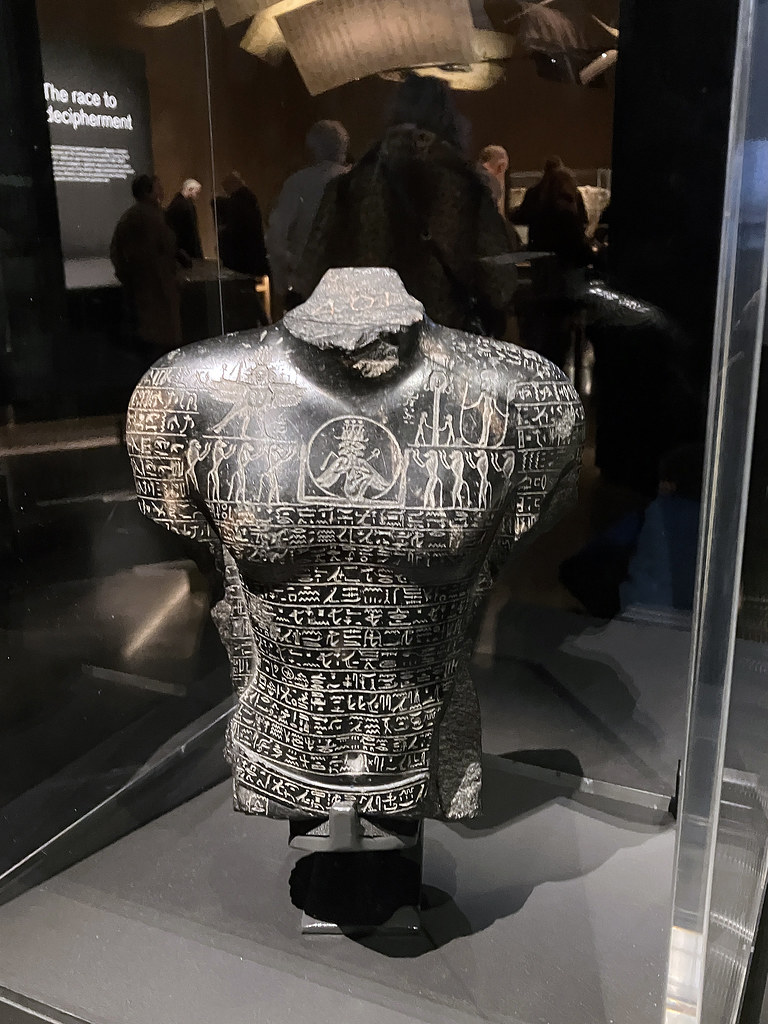Dating to the 30th Dynasty (circa 350–300 B.C.), the basalt torso of Pa-Maj is a remarkable artifact showcasing ancient Egyptian beliefs in protection and spirituality. Despite its partial mutilation, the statue portrays a man standing upright, arms at his sides with palms turned inward, leaning against a dorsal pillar that serves as both structural support and symbolic element.

A Protective Talisman Covered in Magic
The torso is intricately engraved with hieroglyphic inscriptions and divine imagery, including depictions of gods like Thoth, Isis, and Horus. These figures, revered for their healing and protective powers, are arranged to guard against dangers such as venomous snakes and scorpions. The chest, shoulders, and back feature protective spells, while the dorsal pillar is adorned with images of deities performing safeguarding roles.
Purpose and Significance
The inscriptions reveal the statue’s owner, Pa-Maj, and its purpose: to fortify the heart and neutralize poison, reflecting the Egyptian belief in the heart’s vital role in both life and the afterlife. Positioned in a public space, such as a temple, the statue likely acted as a protective talisman for the community. Representing Horus, it offered divine assistance to those in need while ensuring Pa-Maj’s name and legacy endured.

A Legacy of Spirituality and Artistry
The Basalt Torso of Pa-Maj exemplifies how ancient Egyptians blended art and religion to create objects of profound spiritual significance. It is a timeless reminder of their belief in the protective power of deities and their quest for eternal remembrance, achieved through faith, magic, and art.

